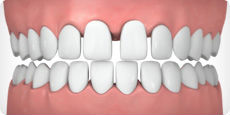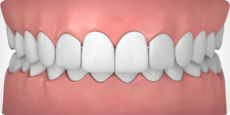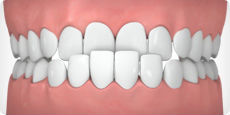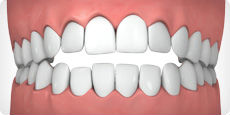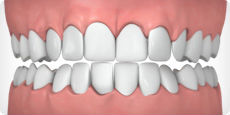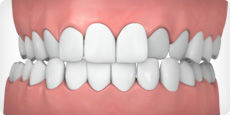Treatable Cases
From mild cases of crooked teeth and protruding teeth, to much more difficult dental problems involving serious malocclusion, overbite, or underbite, Invisalign® effectively corrects a wide variety of dental problems. Whether your teeth are widely gapped, overly crowded or somewhere in between, Invisalign has an affordable teeth straightening option for you.
Take a look at our Invisalign Actual Results; you’ll find relevant before-and-after pictures of some real Invisalign patients. You’ll see for yourself the cosmetic improvement-but the more important aspect is that fixing common teeth problems can potentially have positive benefits for your dental health as well as overall health. Take a moment to watch this video about the negative effects crooked teeth can have on your oral health.
Were also continually making new advancements in our products and treatment process for even better clinical results. Most recently, the addition of Precision Cuts allows our aligners to now accommodate the use of elastics. As a result, more severe bite issues can be corrected effectively.
Here are some of the main conditions Invisalign currently treats. But if there is a specific dental problem that you do not see addressed here, please contact your Invisalign Provider for more information to see if Invisalign is right for you.
Content & Images Courtesy of Invisalign®
GAPPED TEETH
Gaps between teeth can occur with abnormal continued growth of the jawbone. Missing teeth can also cause the surrounding teeth to shift due to the extra space, creating gaps in your teeth. Spacing issues and gaps between teeth can lead to gum problems (due to lack of protection by the teeth), periodontal pockets and increased risk of periodontal disease.
OVERBITE
What people commonly refer to as an “overbite” is known to dental professionals as “overjet.” It occurs when the upper teeth bite over the lower teeth. It’s typically caused by genetics, bad oral habits, or overdevelopment of the bone that supports the teeth. This can lead to gum problems or irritation, and/or wear on the lower teeth, and can cause painful jaw and joint problems.
UNDERBITE
Underbite can occur when the lower teeth protrude past the front teeth. It’s usually caused by undergrowth of the upper jaw, overgrowth of the lower jaw, or both. It can also be caused by missing upper teeth. This can prevent the normal function of front teeth or molars, which can lead to tooth wear. It can also cause painful jaw and joint problems.
OPEN BITE
Open bite often occurs when some teeth are unable to make physical contact with the opposing teeth for a proper bite. Most often caused by a genetic abnormal jaw structure or excessive thumb-sucking, an open bite can cause poor or painful chewing, and even speech impairment.
CROWDED
Teeth crowding occurs when there is simply a lack of room within your jaw for all of your teeth to fit normally. When left untreated, overly crowded teeth can get worse over time, and result in severely crooked teeth. This crowding can lead to plaque accumulation, tooth decay and an increased chance of gum disease.
CROSSBITE
Crossbite can occur when the upper and lower jaws are both misaligned. It causes one or more upper teeth to bite on the inside of the lower teeth, and can happen on both the front and the sides of the mouth. This can cause wear of the teeth, gum disease and bone loss.


